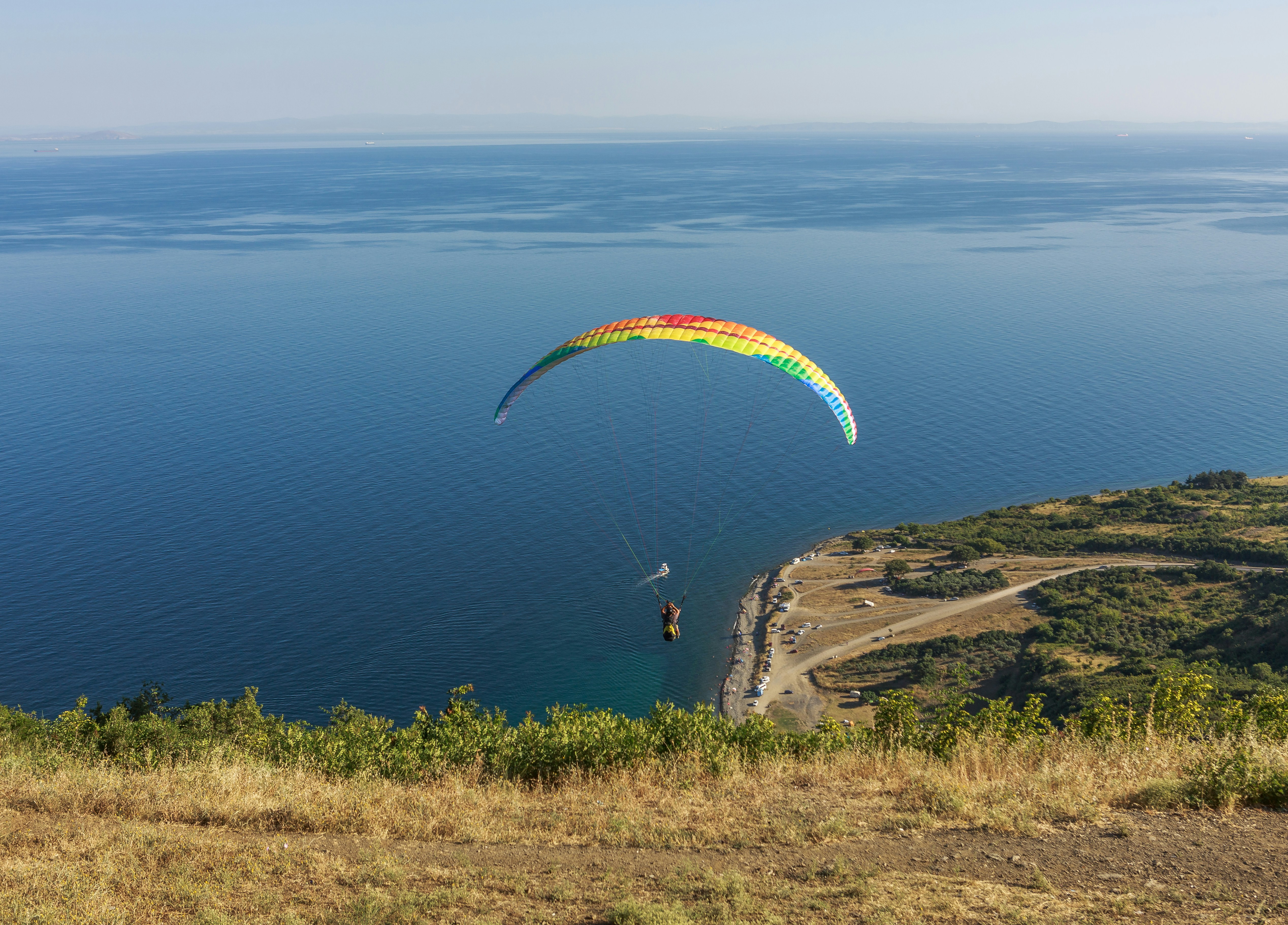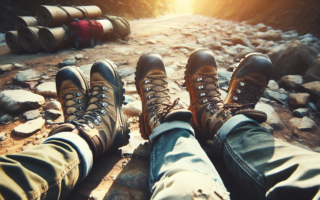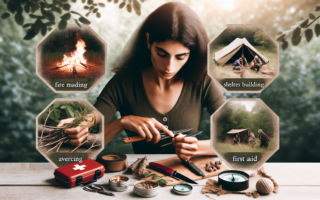Are you and your partner looking to add some excitement to your weekends? If so, why not try your hand at adventure sports? As a couple new to this thrilling world, it can be daunting to figure out where to begin. But fear not! This article will provide you with a range of fun and easy outdoor activities that are perfect for beginners like you. From hiking picturesque trails to kayaking along tranquil rivers, get ready to embark on a journey filled with exhilaration and shared experiences.
Hiking
Choose beginner-friendly trails
When you’re just starting out with hiking, it’s important to choose trails that are suitable for beginners. Look for trails that are marked as easy or suitable for beginners. These trails often have gentle slopes, well-maintained paths, and are shorter in length. They provide a great opportunity to build your stamina and get used to walking on various terrains. Research online or ask experienced hikers for recommendations on beginner-friendly trails in your area.
Invest in proper hiking gear
To fully enjoy your hiking experience, it’s important to invest in proper hiking gear. Start with a good pair of hiking boots that provide ankle support and have good traction. You’ll also need comfortable and moisture-wicking clothing, as well as a backpack to store essentials such as water, snacks, a first aid kit, and a map. Don’t underestimate the importance of a hat, sunglasses, and sunscreen to protect yourself from the sun’s rays. As you gain more experience and venture into more challenging hikes, you can consider investing in additional gear such as trekking poles and a GPS device.
Pack essential items for a day hike
When going on a day hike, it’s important to pack essential items to ensure your safety and comfort. Along with the hiking gear mentioned above, be sure to carry enough water to stay hydrated throughout your hike. Pack high-energy, non-perishable snacks to keep you fueled along the way. It’s also essential to bring a map and a compass or a GPS device to navigate the trails. Additionally, include a whistle, a flashlight, a multi-tool, a waterproof jacket, and a basic first aid kit in case of emergencies. Always check the weather forecast before heading out and dress accordingly.
Learn basic navigation skills
Having basic navigation skills is crucial for any hiker. It’s important to know how to read a map and understand trail symbols and markings. Familiarize yourself with the different types of compasses and learn how to use them to find your bearings. You can find online tutorials and videos that teach basic navigation skills for hikers. Additionally, consider taking a navigation course or going on guided hikes to learn from experienced hikers. With practice and experience, you’ll gain confidence in navigating the trails and be able to explore more challenging hikes.
Cycling
Start with leisurely rides
If you’re new to cycling, start with leisurely rides to build your confidence and stamina. Look for bike paths or quiet roads with minimal traffic where you can enjoy a peaceful ride. Aim for shorter distances at first and gradually increase the distance as you become more comfortable. Riding at a relaxed pace allows you to appreciate the scenery and enjoy the experience without feeling overwhelmed. Take breaks when needed and don’t forget to bring water to stay hydrated.
Rent or borrow bicycles before buying
Before investing in your own bicycle, consider renting or borrowing bikes to try out different styles and sizes. This allows you to get a feel for the type of bike that suits you best. Visit local bike shops or outdoor gear rental stores to inquire about bike rental options. They can provide guidance on selecting the right bike based on your height, weight, and riding preferences. Once you’ve determined the type of bike you enjoy riding, you can start considering purchasing your own.
Learn basic bike maintenance
Learning basic bike maintenance is important to keep your bike in good working condition and ensure a safe and enjoyable ride. Start by familiarizing yourself with the different parts of the bike, such as the brakes, gears, and tires. Learn how to clean and lubricate the chain, how to change a flat tire, and how to adjust the brakes and gears. There are many online tutorials and resources available that provide step-by-step instructions. You can also consider attending a local bike maintenance workshop to learn from experienced cyclists.
Explore different terrains
Once you’ve become comfortable with leisurely rides, it’s time to explore different terrains. Challenge yourself by riding on different surfaces such as paved roads, gravel paths, and dirt trails. Each terrain offers a unique experience and helps improve your cycling skills. Research local cycling routes and trails that cater to different difficulty levels. Start with easy terrain and gradually progress to more challenging routes as your confidence and skills grow. Exploring different terrains not only adds variety to your cycling adventures but also helps you become a more versatile cyclist.
Rock Climbing
Take indoor climbing classes
If you’re new to rock climbing, taking indoor climbing classes is a great way to start. Indoor climbing gyms offer controlled environments where you can learn the fundamentals of climbing. Experienced instructors can guide you on proper climbing techniques, as well as teach you how to use the equipment safely. These classes often provide a range of climbing routes suitable for beginners, allowing you to gradually progress and build strength. Indoor climbing also gives you the opportunity to meet other climbers and join a supportive community of enthusiasts.
Start with bouldering
Bouldering is a form of rock climbing that involves climbing shorter routes without the use of ropes or harnesses. It’s a great way for beginners to get started as it allows you to focus on technique and build strength without the added complexities of rope handling. Bouldering routes are usually located on low walls with thick crash pads to cushion falls. The emphasis is on problem-solving and executing precise movements. Bouldering also offers a social aspect, with climbers often collaborating and cheering each other on. Many indoor climbing gyms have dedicated bouldering areas where you can practice this style of climbing.
Acquire proper climbing gear
As you gain experience and progress to outdoor climbing, it’s important to invest in proper climbing gear. Climbing gear includes a harness, climbing shoes, a chalk bag, a belay device, carabiners, and quickdraws. Consult with experienced climbers or visit a specialized outdoor gear store to get advice on selecting the right gear for your needs. It’s essential to ensure that your gear is in good condition and regularly inspected for any signs of wear and tear. Safety should always be a top priority when rock climbing, and having the proper gear is crucial for a safe and enjoyable climbing experience.
Gradually progress to outdoor climbing
Once you’ve gained confidence and proficiency in indoor climbing, you can start exploring outdoor climbing opportunities. Outdoor climbing offers a whole new level of adventure and challenges. Begin with well-established climbing areas that are suitable for beginners. Consult climbing guidebooks, online resources, or local climbing clubs to find information about beginner-friendly routes and areas. Consider going on guided outdoor climbing trips or hiring a climbing guide to ensure safety and receive expert instruction. As you gain more experience, you can gradually progress to more challenging routes and explore different types of rock formations.
Kayaking
Find calm and beginner-friendly waters
For new kayakers, it’s important to start in calm and beginner-friendly waters. Look for lakes, ponds, or slow-moving rivers that offer a relaxed paddling experience. These types of waters provide a stable environment for learning and building your paddling skills. Avoid strong currents, rapids, or open ocean waters until you have gained more experience and developed advanced kayaking skills. Research local kayak rental facilities or kayak tour operators that offer guided tours in calm waters suitable for beginners.
Take kayaking lessons
Taking kayaking lessons is highly recommended for beginners. Professional instructors can teach you the proper techniques for paddling, turning, and maneuvering your kayak. They will also educate you on safety procedures and how to handle different water conditions. Lessons may be available through local outdoor recreation centers, kayak rental facilities, or kayak tour operators. Learning from experienced instructors ensures that you start with a solid foundation and can progress in your kayaking endeavors with confidence.
Wear appropriate safety gear
Safety should always be a priority when kayaking. Wear a properly fitted personal flotation device (PFD) at all times, as it can save your life in case of an accident. It’s also important to wear appropriate clothing that is suitable for the weather conditions. Dress in layers so you can adjust your clothing as needed. Consider wearing a wetsuit or a drysuit if you’re kayaking in cold water. Bring a whistle or other signaling devices in case you need to attract attention. Always check the weather and water conditions before heading out and avoid kayaking in stormy or rough weather.
Practice basic paddling techniques
Mastering basic paddling techniques is essential for an enjoyable kayaking experience. Learn proper stroke techniques for forward paddling, turning, and stopping. Practice different paddle strokes to enhance your maneuverability and efficiency. Familiarize yourself with different types of kayak strokes such as the forward stroke, the sweep stroke, and the draw stroke. You can find instructional videos online or consider joining a local kayaking club or group to receive hands-on guidance from experienced kayakers. With practice and patience, you’ll become more comfortable and confident in your paddling abilities.
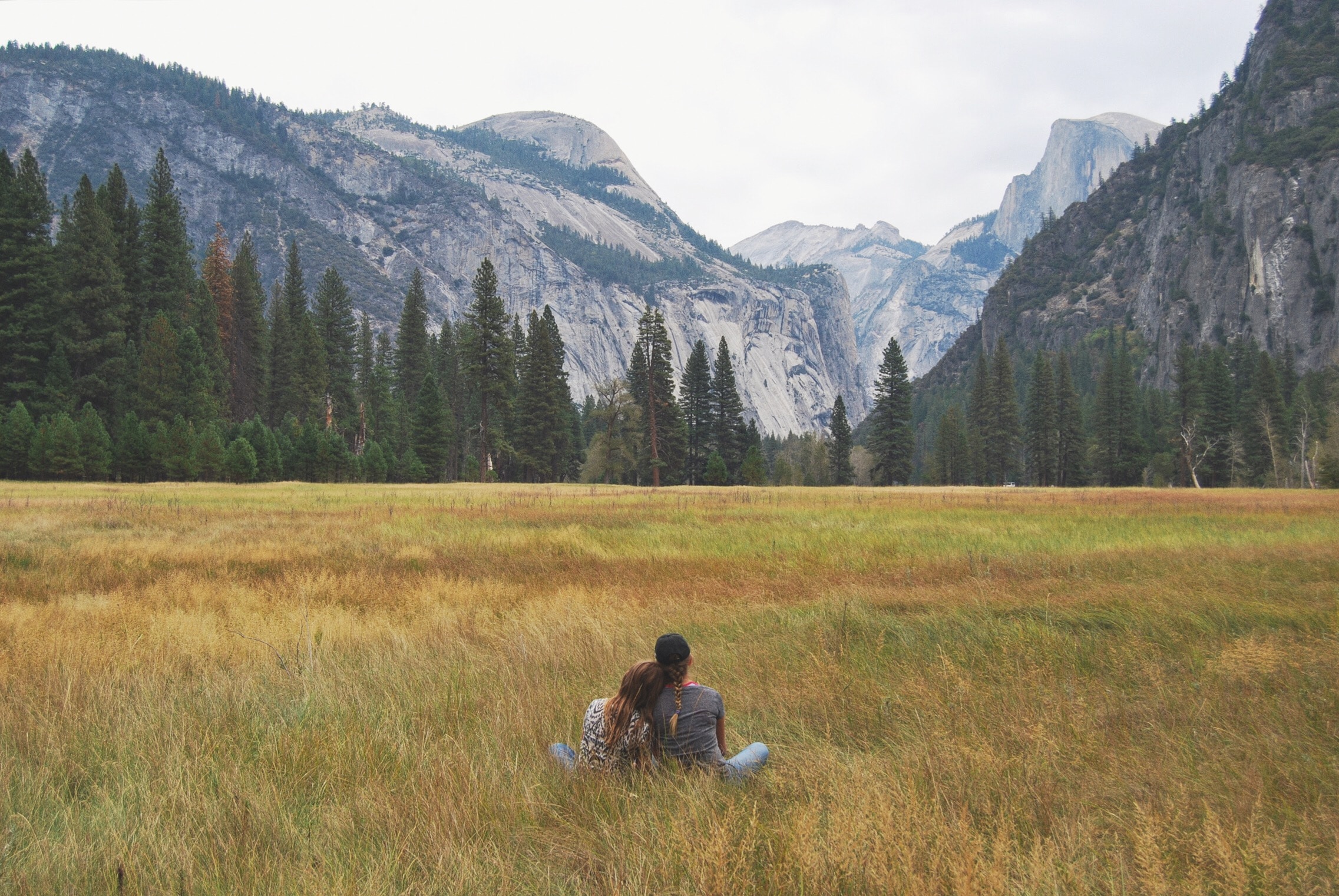
Stand-Up Paddleboarding
Choose calm and flat waters
When starting stand-up paddleboarding (SUP), it’s important to choose calm and flat waters for your initial experiences. Look for lakes, ponds, or slow-moving rivers that offer a tranquil paddling environment. Calm waters provide a stable platform for learning to balance and paddle on a SUP board. Avoid areas with strong currents, waves, or heavy boat traffic until you have gained more experience and feel confident in handling different water conditions. Research local paddleboard rental facilities or SUP tour operators that offer guided tours in calm waters suitable for beginners.
Rent or borrow equipment initially
Instead of immediately purchasing your own stand-up paddleboard, consider renting or borrowing equipment initially. This allows you to try different board sizes and styles to find the one that suits you best. Visit local water sports rental shops or outdoor gear stores to inquire about SUP rental options. They can provide guidance on selecting the right board based on your weight, height, and skill level. Once you’ve determined the type of board you enjoy paddling, you can start considering purchasing your own SUP equipment.
Learn proper paddleboarding techniques
Learning proper paddleboarding techniques is crucial for a safe and enjoyable experience on the water. Start by practicing your balance on the board while on calm waters near the shoreline. Use your paddle to stabilize yourself and find your center of gravity. Learn how to paddle efficiently by engaging your core muscles and using proper paddle techniques. Familiarize yourself with different paddle strokes such as the forward stroke, the sweep stroke, and the corrective stroke. Online tutorials, instructional videos, and even SUP classes are available to help you learn and refine your paddleboarding techniques.
Practice maintaining balance on the board
Maintaining balance on the board is a fundamental skill in stand-up paddleboarding. As a beginner, it’s important to start by positioning yourself on the board with your feet hip-width apart and centered. Engage your core muscles to stabilize your body and keep a slight bend in your knees. As you paddle, practice shifting your weight and making small adjustments to maintain balance. Expect to fall off the board occasionally, especially in the beginning, and embrace it as a fun learning experience. With regular practice and time on the water, you’ll improve your balance and become more confident as a paddleboarder.
Outdoor Yoga
Find peaceful and scenic outdoor locations
Outdoor yoga provides a serene and refreshing experience for both the mind and body. Look for peaceful and scenic locations such as parks, beaches, or mountains to practice your yoga poses. Being surrounded by nature and natural elements adds an extra sense of tranquility to your yoga practice. Research local parks or outdoor spaces that allow yoga activities or consider joining outdoor yoga classes or workshops that are held in picturesque locations. Remember to always respect the environment and follow any rules or guidelines set by the local authorities.
Join beginner-friendly yoga classes
If you’re new to yoga, joining beginner-friendly classes is a great way to learn the basics and receive guidance from experienced instructors. Look for yoga studios or fitness centers that offer outdoor yoga classes specifically tailored for beginners. Beginner classes typically focus on basic yoga poses, breathing exercises, and proper alignment. Instructors will provide modifications and adjustments to help you ease into the practice. Practicing yoga in a group setting also allows you to meet like-minded individuals and build a supportive community.
Invest in a suitable yoga mat
A suitable yoga mat is essential for outdoor yoga practice. Look for a mat that has good traction, is lightweight, and easy to carry. Outdoor surfaces can be uneven or slippery, so having a reliable mat helps to provide stability and prevent injuries. Consider investing in a mat made of eco-friendly materials if sustainability is important to you. Take into account the thickness and comfort of the mat, as well as its durability and ease of cleaning. A quality yoga mat is a worthwhile investment that enhances your outdoor yoga experience.
Practice basic yoga poses and breathing exercises
When starting outdoor yoga, focus on practicing basic yoga poses and breathing exercises. Build a foundation by learning foundational poses such as Mountain Pose (Tadasana), Downward-Facing Dog (Adho Mukha Svanasana), Warrior I (Virabhadrasana I), and Child’s Pose (Balasana). Familiarize yourself with proper alignment and techniques for each pose to avoid strain or injury. Incorporate breathing exercises, such as deep belly breathing or alternate nostril breathing, to help calm the mind and connect with your breath. Start with shorter yoga sessions and gradually increase the duration as you become more comfortable.
Trail Running
Start with shorter and flatter trails
Trail running is a fantastic way to connect with nature and challenge yourself physically. If you’re new to trail running, it’s important to start with shorter and flatter trails to gradually build your endurance and adapt to the demands of trail running. Look for well-marked trails specifically designated for running or jogging. These trails usually have a moderate difficulty level and provide a good introduction to trail running. As you gain more experience and fitness, you can gradually progress to longer and more challenging trails that involve elevation changes and uneven terrain.
Invest in supportive running shoes
Investing in a pair of supportive running shoes specifically designed for trail running is crucial for your comfort and safety. Trail running shoes offer better traction and stability on uneven surfaces compared to regular running shoes. Look for shoes with durable outsoles and protective toe caps to shield your feet from rocks and roots. Research different shoe brands and models, and consider visiting a specialty running store where the staff can provide expert guidance on selecting the right shoes for your feet and running style. Properly fitted and supportive shoes will help prevent common trail running injuries such as ankle sprains and shin splints.
Warm-up and stretch before running
Before setting off on a trail run, it’s important to warm up your muscles and joints to prevent injuries. Start with a dynamic warm-up routine that includes exercises such as leg swings, lunges, high knees, and arm circles. These movements help increase blood flow to the muscles and prepare your body for the demands of running. After warming up, perform static stretches that target major muscle groups such as the calves, quadriceps, hamstrings, and hip flexors. Hold each stretch for 15 to 30 seconds without bouncing. Stretching helps improve flexibility and reduces the risk of muscle strains or pulls during your run.
Track your progress and set goals
To stay motivated and continuously improve as a trail runner, track your progress and set achievable goals. Use a running app or a GPS watch to record your distance, speed, and elevation gain on each trail run. This allows you to monitor your performance and determine areas for improvement. Set realistic goals such as increasing your distance or improving your pace gradually over time. Participate in local trail races or organized running events to challenge yourself and experience the thrill of competing with other trail runners. Celebrate your achievements along the way and enjoy the sense of accomplishment as you reach your goals.
Geocaching
Download a geocaching app
Geocaching is a popular outdoor activity that combines treasure hunting and GPS navigation. To get started, download a geocaching app on your smartphone or GPS device. There are various geocaching apps available that provide a database of geocache locations, descriptions, and GPS coordinates. These apps allow you to search for nearby geocaches and log your finds. Some apps also offer premium features and additional challenges to enhance your geocaching experience. Exploring the world of geocaching through a digital app adds an exciting and tech-savvy element to your outdoor adventures.
Start with easy geocache hunts
As a beginner, it’s best to start with easy geocache hunts to familiarize yourself with the process and gain confidence. Look for geocaches labeled as beginner-friendly or with low difficulty ratings. These geocaches are usually located near urban areas or in parks and have relatively straightforward hideouts. Familiarize yourself with different types of geocaches, such as traditional caches (a container hidden at specific coordinates), multi-caches (a series of caches leading to a final location), or puzzle caches (requiring solving a puzzle to find the coordinates). Starting with easier geocaches allows you to hone your geocaching skills and gradually progress to more challenging finds.
Follow GPS coordinates and clues
Geocaching involves a combination of following GPS coordinates and clues to locate hidden caches. Once you’ve chosen a geocache to search for, input the GPS coordinates into your app or GPS device to obtain the general location. Follow the arrow on your app or device to guide you towards the hidden cache. Use the provided clues, descriptions, and hints to narrow down the search area. Caches can be cleverly camouflaged or hidden in unexpected places, so keep your eyes open and utilize your problem-solving skills. Embrace the thrill of the hunt as you get closer to discovering the hidden treasure.
Leave a small item when taking something from a cache
When you find a geocache, it’s important to follow the “take something, leave something” principle. Geocaches usually contain small trinkets or toys as well as a logbook to record your find. If you decide to take an item from the geocache, make sure to leave a small item of equal or greater value in return. This ensures that the cache remains well-stocked for future finders. Avoid leaving perishable items, food, or anything that could attract wildlife. Be respectful of the geocache and the efforts put into maintaining it by following proper geocaching etiquette.
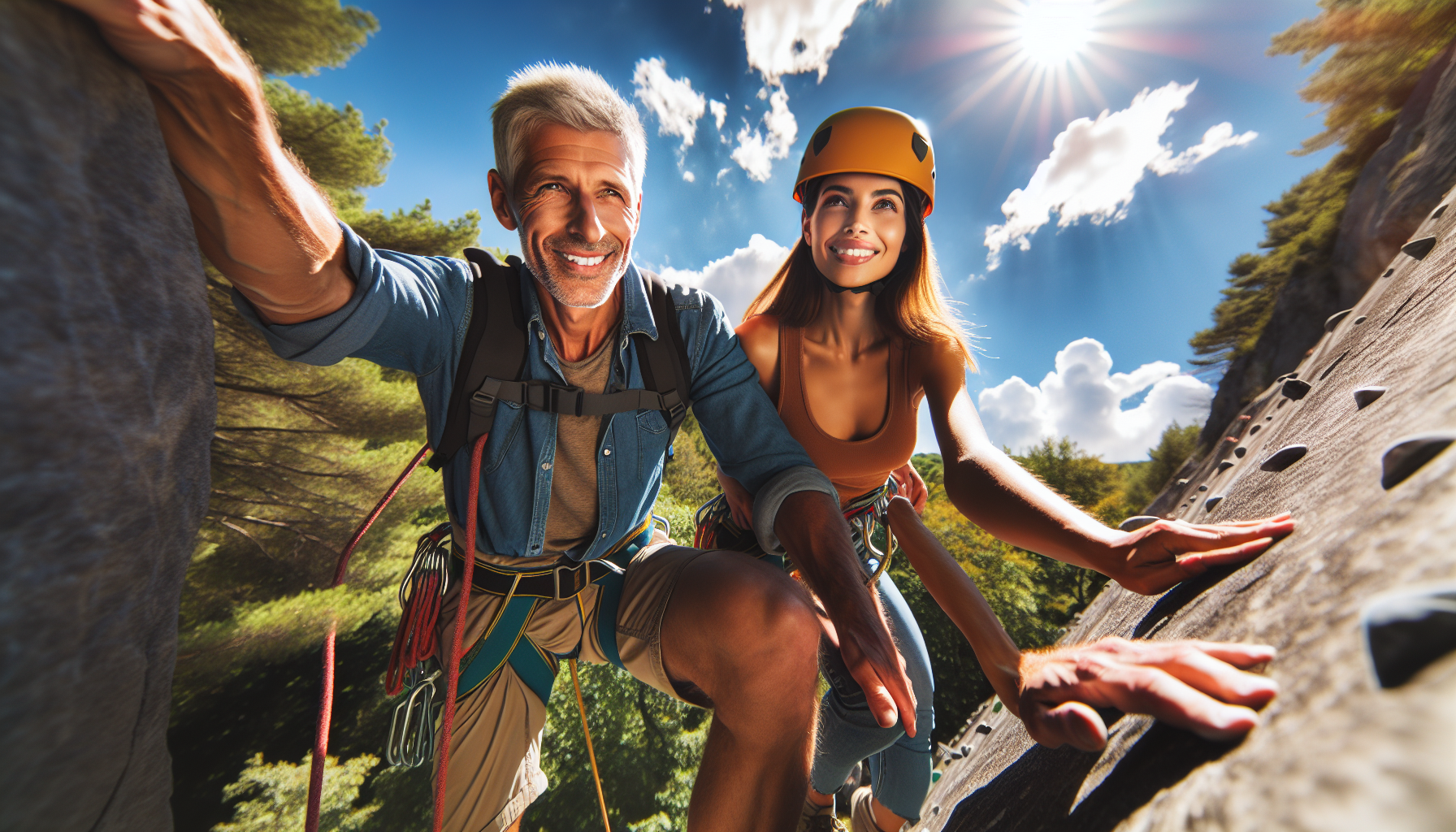
Birdwatching
Research birdwatching spots in your area
Birdwatching is a wonderful outdoor activity that allows you to connect with nature and observe various bird species in their natural habitats. Start by researching birdwatching spots in your local area. Look for nearby parks, nature reserves, or wildlife sanctuaries that are known for their bird populations. Many online resources provide information about ideal birdwatching locations, the species you may encounter, and the best times of the year to visit. Consider joining local birdwatching groups or forums to connect with experienced birdwatchers who can offer insights and recommendations based on their own experiences.
Invest in a pair of binoculars
Investing in a pair of binoculars is essential for birdwatching. Binoculars allow you to observe birds from a distance without disturbing them. Look for binoculars that offer a good range of magnification and a clear, sharp image. Consider the weight and size of the binoculars to ensure they are comfortable to carry during long birdwatching sessions. Visit a specialty optics store or consult with experienced birdwatchers to get recommendations on the best binoculars for your budget and needs. With a good pair of binoculars, you’ll be able to appreciate the beauty and details of birds up close.
Join guided birdwatching tours
Joining guided birdwatching tours is a fantastic way to learn from experienced birdwatchers and discover new birdwatching locations. Guided tours provide expert guidance and interpretation, allowing you to deepen your knowledge and understanding of bird species and their behaviors. Professional guides can help you identify different bird calls, point out unique characteristics, and provide valuable insights into the local ecology. Birdwatching tours often take you to prime locations where you’re more likely to spot a diverse range of bird species. It’s also an opportunity to meet fellow birdwatchers and share your enthusiasm for birds with like-minded individuals.
Learn about different bird species and their habitats
To fully appreciate birdwatching, it’s important to learn about different bird species and their habitats. Familiarize yourself with the local bird species in your area and their migratory patterns. Invest in a field guide or download bird identification apps that provide descriptions, images, and range maps of various bird species. Learn about their preferred habitats, feeding behaviors, and breeding habits. Understanding the ecological requirements of different birds will help you locate and observe them in their natural environments. As you gain more knowledge, you’ll become a more skilled birder and be able to identify birds based on their unique characteristics and behaviors.
Outdoor Photography
Choose interesting outdoor subjects
Outdoor photography allows you to capture the beauty of nature and share it with others. Start by choosing interesting outdoor subjects that inspire you. Look for landscapes, wildlife, plants, or natural elements that evoke a sense of wonder or tell a story. Experiment with different angles, lighting conditions, and perspectives to bring out the unique qualities of your subjects. Find beauty in the details, such as patterns in leaves or the play of light and shadow. By focusing on intriguing outdoor subjects, you’ll be able to create captivating photographs that resonate with viewers.
Learn basic photography techniques
To improve your outdoor photography skills, it’s important to learn basic photography techniques. Familiarize yourself with concepts such as aperture, shutter speed, ISO, and composition. Understand how these elements work together to create well-exposed and visually appealing photographs. Experiment with different camera settings and shooting modes to achieve the desired effects. Study the works of renowned outdoor photographers and analyze their techniques and approaches. Many online resources provide tutorials and tips specifically tailored to outdoor photography. Practice regularly and be open to learning from both successes and challenges.
Invest in a good camera or use a smartphone
While a good camera can enhance the quality of your outdoor photographs, you don’t necessarily need to invest in expensive professional equipment to start. A good smartphone camera can produce stunning images if used effectively. However, if you’re looking to take your outdoor photography to the next level, consider investing in a camera that suits your skill level and interests. Research different camera options and consult with experienced photographers or camera experts to find the right camera for your needs and budget. Ultimately, the most important aspect of outdoor photography is capturing beautiful moments and expressing your unique perspective, regardless of the equipment you use.
Experiment with different angles and compositions
To add creativity and visual interest to your outdoor photographs, experiment with different angles and compositions. Instead of always shooting at eye level, try crouching down low or shooting from a higher vantage point. Play with different perspectives and find the most appealing angle for your subject. Compose your images by considering the rule of thirds, leading lines, symmetry, or other composition techniques. Don’t be afraid to break the rules and find your own unique style. Outdoor photography provides endless opportunities for experimentation, so be open to trying new approaches and capturing breathtaking images.


